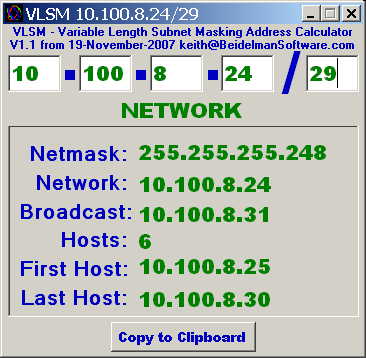Oct 28, 2019 And MAC addresses contain key information for knowing more details about each network device. First, it is essential to understand the format of the MAC address. Traditional MAC addresses are 48 bits represented in 12-digit hexadecimal numbers (or six octets). On broadcast networks, such as Ethernet, the MAC address is expected to uniquely identify each node on that segment and allows frames to be marked for specific hosts. It thus forms the basis of most of the link layer (OSI Layer 2 ) networking upon which upper layer protocols rely to produce complex, functioning networks.
An Ethernet multicast MAC address indentifies receivers that belong to the same multicast group at the data link layer.
As defined by IANA, the most significant 24 bits of an IPv4 multicast MAC address are 0x01005E. Bit 25 is 0, and the other 23 bits are the least significant 23 bits of an IPv4 multicast address.
Figure 6: IPv4-to-MAC address mapping
The most significant four bits of an IPv4 multicast address are fixed at 1110. In an IPv4-to-MAC address mapping, five bits of the IPv4 multicast address are lost. As a result, 32 IPv4 multicast addresses are mapped to the same IPv4 multicast MAC address. A device might receive unwanted multicast data at Layer 2 processing, which needs to be filtered by the upper layer.

As defined by IANA, the most significant 16 bits of an IPv6 multicast MAC address are 0x3333. The least significant 32 bits are mapped from the least significant 32 bits of an IPv6 multicast address. Therefore, the problem of duplicate IPv6-to-MAC address mapping also arises like IPv4-to-MAC address mapping.

Figure 7: IPv6-to-MAC address mapping
Overview
Every computer's network interface has a unique identifer called a MAC address. It is a 12 digit hexadecimal number usually delimted by colons, e.g. ab:01:23:ef:45:dc. Both wired and wireless network interfaces have these addresses.
Finding the Ethernet MAC Address


Microsoft Windows
For PCs running Windows 7 and earlier, Go to Start Menu > Programs > Accessories > DOS Command Prompt. Type cmd. For PCs running Windows 8 and later, launch the 'Command' program by searching for it in your applications list. When the command window appears, type ipconfig /all. The Physical Address value for your ethernet card is your MAC address. Make sure you're looking at your ethernet interface and not your wireless interface.
Apple MacOS X
From the Desktop
- Go to the Apple menu > System Preferences > Network (under 'Internet and Wireless').
- Make sure that the ethernet interfaces is selected on the left side.
- Click on the Advanced button on the right, and then the Hardware tab. The MAC address is listed there.
From the Terminal
Type 'networksetup -listallhardwareports'. The 'Ethernet Address' field for the ethernet hardware port is your MAC address.
Linux
Ethernet Broadcast Address
Type ip link in a terminal window. The link/ether field associated with your ethernet interface is your MAC address.

Comments are closed.